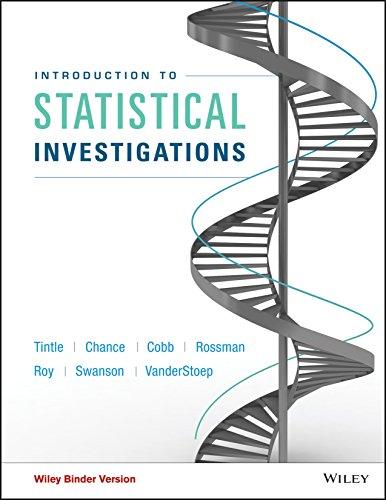Answered step by step
Verified Expert Solution
Question
1 Approved Answer
Identify the following based on the information below: The null hypothesis in words The alternative hypothesis in words The null hypothesis in symbols The alternative
Identify the following based on the information below:
- The null hypothesis in words
- The alternative hypothesis in words
- The null hypothesis in symbols
- The alternative hypothesis in symbols
- Hays et al. (2016) were interested in how we judge the duration of a task. They knew that the perceived time can lengthen or shorten depending on aspects of the stimulus itself (e.g., brightness can affect duration judgments) and what we're doing at the time (e.g., our emotional state can affect duration judgments). They wondered if manipulating the orientation of a visual stimulus (flipping the scene upside-down) would affect the subjective perception of time. To find out, they first trained participants to judge short (400 milliseconds) and long (1,600 milliseconds) intervals. The participants were shown either inverted or upright scenes of both indoor and outdoor environments (offices, living rooms, streets, etc.) and asked to indicate if the duration of the scene was closer to the short or the long standard.
- Gillen and Berstein (2015) investigated the influence that having a tan might have on hiring decisions. They knew that just as a pale complexion was the marker of personal wealth and a life of leisure in the nineteenth century, having a deep tan is a marker of affluence and social status today. They presented participants with a rsum complete with a photograph of the job applicant (all participants read the same resum and saw the same person in the photograph). Some participants saw the untanned picture of the job applicant; others saw the digitally altered tanned photo. Participants were asked whether they would recommend the person for the job and, if so, to rate the strength of their recommendation on a scale from 1 to 10 (where 10 is the strongest possible recommendation)
Using the passages above, calculate the following statistics:
- X
- SD (standard deviation)
- X
- X
For the two samples, =20.00and=15.00.
3. Sample 1
| 2 |
| 3 |
| 2 |
| 5 |
| 3 |
| 3 |
| 4 |
| 3 |
| 4 |
| 4 |
4. Sample 2
n = 50
x = 1,270.533
x2= 33,706
Step by Step Solution
There are 3 Steps involved in it
Step: 1

Get Instant Access to Expert-Tailored Solutions
See step-by-step solutions with expert insights and AI powered tools for academic success
Step: 2

Step: 3

Ace Your Homework with AI
Get the answers you need in no time with our AI-driven, step-by-step assistance
Get Started


